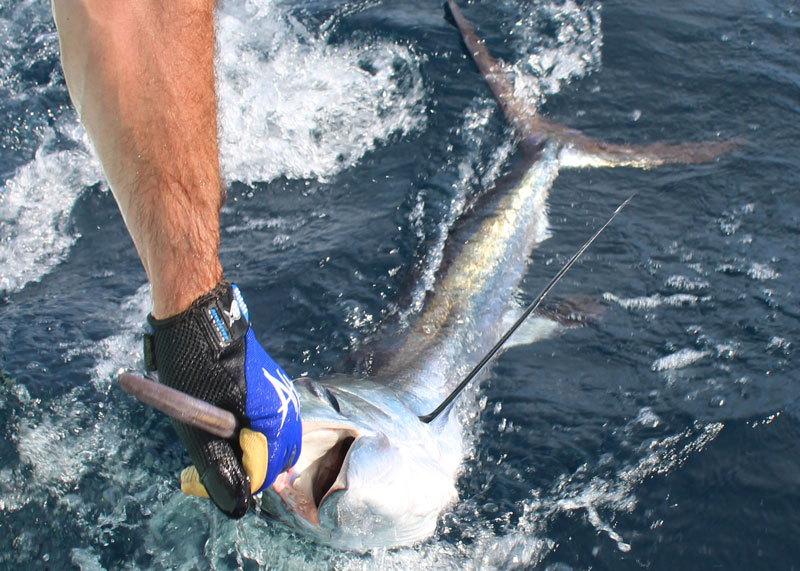The classic bait and switch is a widely known tactic for getting marlin to eat a hook, but traditionally, it’s performed with a hookless teaser and a hook-bait. In reality, most of the time recreational anglers have the opportunity to use this tactic they’re trolling a mixed spread and teasers aren’t in the water. On top of that, when someone spots a bill behind the boat the usual reaction is to yell and shout — but it’s rare to see someone spring into action in such a way that the fish will jump on a bait. So, the next time you’re trolling a mixed spread offshore, remember:

- If you spot a billfish going after a rigged bait there’s probably no need for a switch; let it commit suicide. If you can get to the rod in time go into freespool as the fish hits, allow five or six seconds, then send the hook home.
- If you spot a billfish batting at a rigged bait but it doesn’t try to eat, take three cranks on the reel, pause, then take three more. Try to convince the fish that his dinner is trying to flee.
- If you spot a billfish eyeballing or batting at an artificial, it’s time to enact a “real” bait and switch. You can either grab a pitch-bait and send it back or grab a rod with a natural bait that’s already deployed, and crank, drop, or direct the bait as necessary so it starts 10 or 15 feet in front of the fish then flutters back past it as though injured.
- If you spot a billfish eyeballing or batting at an artificial and you have a rigged bait forward of it and close by, crank on the artificial while dropping the rigged bait back (the sight of the artificial “escaping” will often get the billfish hot, and when it sees the "injured" natural bait sinking back an attack is probable).